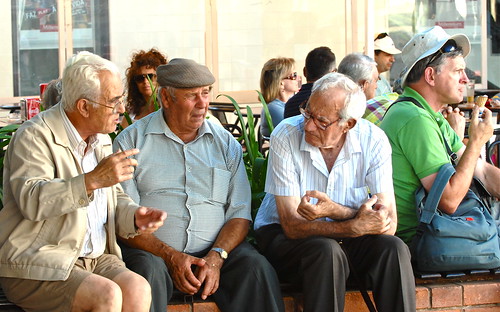Word of mouth marketing is a powerful weapon in any growth strategy. However, many people struggle to generate good word of mouth as hard as they may try.
Andy Sernovitz, the author of Word of Mouth Marketing, is an expert on the subject and suggests that when thinking about this and working up a plan to develop your word of mouth marketing you should think about 5 T’s:
- Talkers – people like customers, employees, fans, friends, volunteers, partners, bloggers, press, influencers etc who will talk about you
- Topics – people need a reason to talk about you. So, give them something to talk about. Be it great service, a new offer, a funny new ad, a great cause etc
- Tools – rather than leaving the talk to chance make sure that you give your talkers the right tools to be able to spread the word about you whether it is by email, flyers, handouts, vouchers, forms or whatever
- Taking Part – all of this won’t necessarily happen without your help so to get things going you have to join in, be around, participate, reply, discuss on and offline etc
- Tracking – realise that there is a lot of ‘art’ in word of mouth marketing but also realise that you should always be measuring what works and what doesn’t.
I think this is a great process but when talking to a client about their word of mouth strategy the other day, we realised that the there are distinct reasons why people talk about and share things. To help with the planning of their word of mouth marketing strategy we found it easier to break down their ‘Topics’ into two areas:
- Little talk; and
- Big talk
Little talk tends to be incremental day to day stuff that you do that customers like, think is cool, unusual or great and, hence, mention it to their friends.
An example of little talk that worked on me the other day happened when I was in a Caffe Nero near to me. On that day, they were giving away ‘tasters’ of a new chocolate pastries that they had just got in. Now, these were no ordinary ‘tasters’. None of these mere morsel stuff that you usually experience. These ‘tasters’ were big enough to be more than just a regular taste give away. They were almost a snack in their own right and they tasted good too.
Another coffee shop example I came across was when a Starbucks I was meeting a colleague in was giving away free latte’s for a whole day. Nice, if you drink latte.
On the other hand, big talk tends to be stuff where it’s not about little things but about things and people that your ‘Talkers’ and their friends and family care about.
A great example I heard about the other day came from the Springwise website, where Ribar Floral in Detroit is giving away free ‘Good Job Bouquets’ to locals that are nominated by their community for the kind things they’ve done. The rationale behind the programme is to say thank you to the community and to give something back to all of those people that have supported them and kept them going through tough economic times. Nice work.
The conclusion for me in all of this is that people don’t talk about vanilla stuff. People talk about stuff that’s different and that they care about and it splits into big talk and little talk.
Thanks to pedrosimoes7 for the image.




